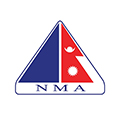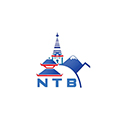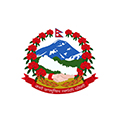Bhutan is small but very beautiful country in south Asia. Although it measures only 110 miles from the north to south and 200 from east to west, Bhutan - called by its people Druk Yul, "the Land of the Thunder Dragon" -- is home to a remarkable variety of climates and ecosystems. Essentially, the country is divided into three major land regions: plains and river valleys in the south; a mid-Himalayan (5,000 to 14,000 ft. high) area north of the valleys; and the mountainous lands in the Himalayas, which range from 14,000 to 24,000 ft. above sea level.
Bhutan's unique natural beauty unites with a wide range of cultural values, languages, customs, and friendly social atmosphere. With a population 672,425 people, Bhutan is a tiny country full of colors. Carefully preserved between high mountains, Bhutan was never colonized and she has always protected her genuine culture in a natural environment. Bhutan is comprised of a mosaic of different peoples who continue to live in valleys isolated from one another and the outside world by formidable mountain passes. Differing ethnic groups are also distributed according to the varying environments. It is possible to divide Bhutan's population into three broad ethnic groups, though the distinctions blur in places.
Nature inspires us and gives us peace and calmness. Actually, whole Himalayas are noteworthy for their biological richness. Since the Himalayas' geologically recent origin less than 25 million years ago, they have molded the region's fauna and flora by limiting Indian species from moving northward, and Tibetan species from moving southward. Himalayan rivers were in place before the mountains were, and consequently, the river courses have remained unchanged while they have cut ever deeper gorges and valleys. These valleys have provided the main avenues of contact between Indian and Eurasian wildlife.
Bhutan, far less explored and catalogued, is still a mystery for the most people around the world. A land of legends, Yeti, folktales, Buddhist spirit, and peace Bhutan is our home, where we grew and became what we are today
Bhutan Tourism Regulation
Tourism has not been that much widespread in Bhutan as we look at preserving and nurturing our culture and tradition. Bhutanese are immensely religious people and therefore it would be good on ones part to respect and understand the local customs and way of life, especially while visiting those places of religious significance.
Tourism Industry in Bhutan is founded with the principle of sustainability in mind, which means that tourism must be environmentally and ecologically friendly, socially and culturally acceptable, and also economically feasible.
Due to this, tourism is monitored with a strict hand and the number of tourists visiting Bhutan is maintained at an environmentally manageable level.
Visitors may experience Bhutan only on all-inclusive package tours for which a fixed daily tariff is set by the Royal Government of Bhutan. This tariff covers the following services: accommodation & all meals, transport, guide, entrances fees to museums, monuments and cultural sites, and additionally a cultural program for visitors traveling in a group of three or above.
Bhutan VISA Info
Your passport must have at least 6 months' validity. You will also make sure that you have an additional page for a visa for Bhutan, as well as space for the visas for any countries you are visiting en route. If you need to get a new passport please do so well before your planned trip so that there is no delay in applying for your Bhutanese visa. The visa is issued by the Ministry of Foreign Affairs within Bhutan as Bhutan has very few embassies abroad. No foreign missions abroad grant Bhutan tourist visas. You may apply in advance through a tour operator and receive confirmation that your application has been approved before you travel to Bhutan. You can furnish the information require by us in the Contact Us. There is no need to sign the visa application at this time.
It is advisable to apply early for the visa because the process takes a little more time than a normal visa application. Once you send your personal information, Yeoong Travel submits your application first to the Tourism Council of Bhutan (TCB) and then to the Department of Immigration, Ministry of Home and Culture Affairs, both based in Thimphu. The visa is not issued until the TCB has checked that the full tour payment has been received into its bank account. The confirmation and reference number then sent to Yeoong Travel and a copy will be send to you. You have to show this at the check-in desk for Druk Air. You can not board the Druk Air flight without this document so it is very important to have it along with your passport.
Upon your arrival in the country, either at Paro Airport or at Phuentsholing/Samdrup Jonkhar (if you are entering by road) the actual visa is stamped on the passport. At this time at the place of entry you have to present a passport photo with your passport number written on the back. Please keep in mind that the visa is issued for exactly the same number of days and dates as booked by you. If circumstances arise for a visa extension once you are in Bhutan it can be arranged. Members of groups are expected to arrive and depart together.
PERMITS
Route permits are required when moving between all districts in Bhutan except from Paro to Thimpu. Yeoong Travel obtains a permit for the places mentioned in your itinerary and this permit is checked and endorsed by the police at immigration checkpoints strategically located at important road junctions. Permits to Enter Temples after 2001 the rules were changed to allow tourists to visit the courtyards of dzongs and, where feasible, one designated lhakhang (temple) in each dzong but only when accompanied by a licensed Bhutanese guide. This provision is subject to certain restrictions, including visiting hours, dress standards and other rules that vary by district. Because dzongs are open to all during the time of a Tsechu. You may visit the courtyard, but not the lhakhangs, if your trip coincides with a festival. If you are a practicing Buddhist, you may apply for a permit to visit specific dzongs and religious institutions. This is issued by the National Commission for Cultural Affairs, and an application should be made in advance through Yeoong Travel. The credibility of your application will be enhanced if you include a letter of reference from a recognized Buddhist organization in your home country.
Bhutan Climate
Bhutan is multi climatic country. The climate of Bhutan is variable from region to region. While it is tropical in the southern plains, in the central valleys one experiences cool winters and hot summers. On the other hand, in the Himalayas severe winters and cool summers are prevalent.
Flora & Fauna
Bhutan is a botanists’ paradise. One of the ancient names given to Bhutan was 'Southern Valley of Medicinal Herbs.' Rhododendrons, junipers, magnolias, carnivorous plants, rare orchids, blue poppy (the national flower), edelweiss, gentian, medicinal plants, daphne, giant rhubarb, high-altitude plants, tropical trees, pine and oak abound here.
Among the rare and exotic faunas found in Bhutan the golden langur, red pandas, black-necked crane, snow leopard, takin, musk deer, Himalayan brown bear, Himalayan marten, tiger, hornbills, pheasants, mountain goats and timid blue sheep are some.
Getting in Bhutan
There are 2 ways through which you can enter Bhutan:
By Druk Air
The best way to enter Bhutan is by Druk Air, the national air carrier. The following cities are connected to Bhutan with Druk Air flights:
Nepal: Kathmandu (KTM)
India: Delhi (DEL), Kolkotta (CCU) & Gaya (GAY)
Bangladesh: Dhaka (DAC)
Thailand: Bangkok (BKK)
Druk Air is the only airline operating in Bhutan. As Druk Air flights may be delayed because of weather in the monsoon (July & August), it is advisable to keep a 24-hour gap before any onward international connections.
Actual Adventue can assist you in arranging your Druk Air flights. For the Druk Air reservation, we would require your full names as in your passports. We will buy your Druk Air tickets and send them to you in advance.
By Overland
There is one overland entry and 2 exit points:
Both entry and exit can be done via Phuntsholing
You can enter/exit Bhutan overland from the Indian state of West Bengal into Phuntsholing, border town in southwest of Bhutan. Four hours drive from Phuntsholing will take you to Bagdogra in the state of West Bengal (India) which is the nearest airport from Phuntsholing. Phuntsholing serves as a convenient point for the travelers wishing to visit the Indian states of Sikkim, West Bengal along with Bhutan. The drive from Phuntsholing to Thimphu takes six hours.
Only exit can be done via Samdrup Jongkhar
Samdrup Jongkhar is in southeast, 110 km from Guwahati, India, which is nearest to the Guwahati Airport. From Guwahati, you may fly into other Indian cities like Delhi, Bombay or Kolkotta and to your onward flight connections. This exit is more convenient if the travelers do not wish to travel back the same lateral route to Paro for the flights and who would like to combine Assam trips with Bhutan
 Actual Adventure Pvt. Ltd.
Actual Adventure Pvt. Ltd. Actual Adventure Pvt. Ltd.
Actual Adventure Pvt. Ltd. 












